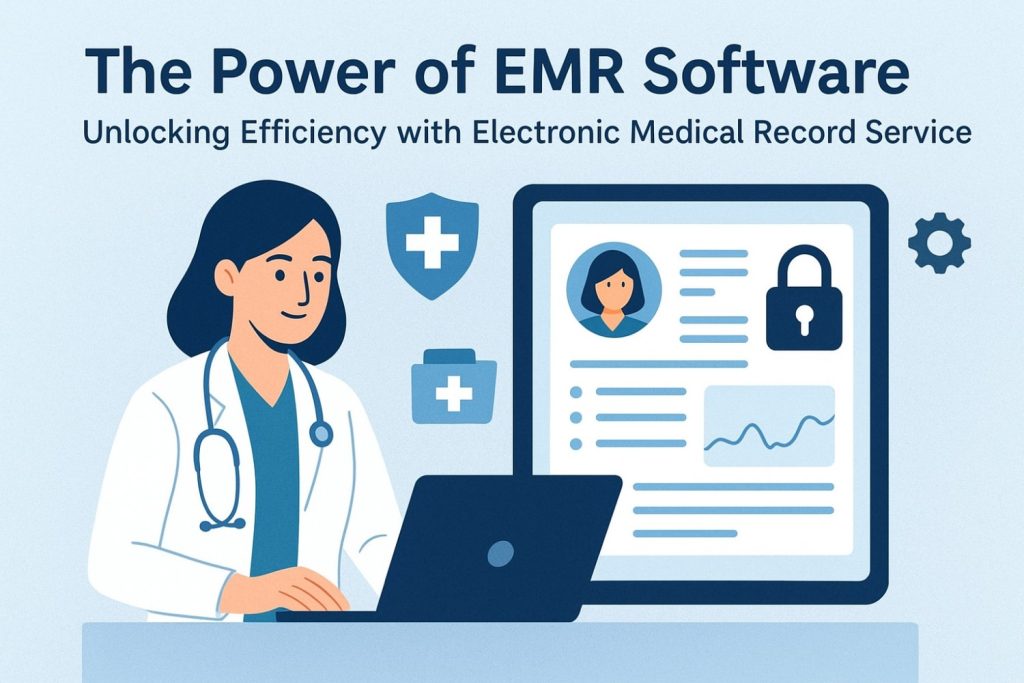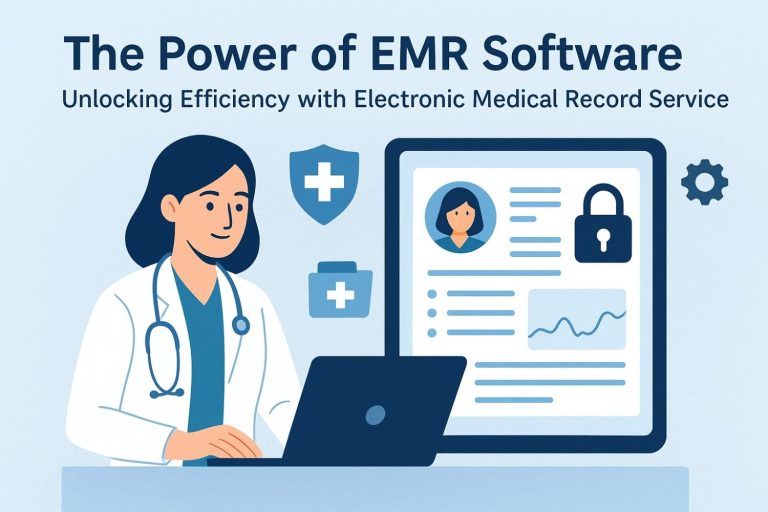The healthcare industry has always been one of the most critical sectors in society, but in recent years it has faced increasing challenges—rising patient volumes, demand for remote care, and the need for more accurate data management. To address these challenges, hospitals and clinics worldwide are turning toward electronic medical record systems. These digital solutions, along with emr software and advanced Electronic Medical Record Service platforms, are transforming how providers deliver care, improving efficiency, and empowering patients.
This blog explores what these systems are, why they matter, their benefits, and the role they play in shaping the future of healthcare.
What Are Electronic Medical Record Systems?
Electronic medical record systems are digital platforms designed to store, organize, and manage patient health information. Instead of relying on traditional paper files that are prone to being lost, damaged, or misinterpreted, EMRs keep everything in one centralized, secure, and accessible system.
An EMR typically includes:
- Patient demographics
- Medical history and diagnoses
- Lab test results and imaging
- Medications and allergies
- Treatment plans
- Progress notes
While electronic medical record systems initially focused on record-keeping, today they integrate with advanced healthcare solutions to support everything from scheduling appointments to billing and insurance management.
Understanding EMR Software and Electronic Medical Record Service
EMR Software
Emr software refers to applications that help healthcare providers digitize patient data, streamline workflows, and access records instantly. It ensures accuracy, improves communication among staff, and reduces errors caused by manual processes.
Electronic Medical Record Service
An Electronic Medical Record Service extends beyond just software. It’s a complete service package that includes hosting, maintenance, data security, compliance, and support. Many healthcare facilities prefer subscribing to EMR services instead of managing their own IT infrastructure, as this ensures reliability and continuous updates without additional overhead costs.
Together, emr software and Electronic Medical Record Service form the backbone of modern healthcare delivery.
Why Healthcare Needs Electronic Medical Record Systems
Traditional paper-based healthcare records come with many drawbacks—loss of files, delayed information sharing, difficulty in collaboration, and a higher risk of errors. Electronic medical record systems resolve these issues by offering a streamlined, secure, and transparent solution.
Here’s why they are essential:
- Accuracy and Clarity – No more illegible handwriting or misplaced notes.
- Instant Access – Providers can pull up patient records in seconds, even during emergencies.
- Collaboration Made Easy – Different specialists can view and update a patient’s file seamlessly.
- Regulatory Compliance – Many countries require digital healthcare records to ensure standardized care.
- Improved Patient Experience – Patients can receive faster care, digital prescriptions, and access to their medical history.
Key Features of EMR Software
Modern emr software is far more than a digital filing cabinet. Some of its most impactful features include:
- Patient Data Management – Centralized storage of demographic and clinical data.
- Clinical Documentation – Doctors can record notes, diagnoses, and treatments efficiently.
- e-Prescriptions – Directly send prescriptions to pharmacies, reducing errors.
- Appointment Scheduling – Simplify patient bookings with reminders and notifications.
- Data Analytics – Use patient data for predictive care and operational insights.
- Data Security – Advanced encryption and access controls protect sensitive health data.
These features make emr software indispensable for healthcare providers seeking accuracy, efficiency, and better patient outcomes.

Benefits of Electronic Medical Record Service
Adopting an Electronic Medical Record Service offers numerous benefits for both healthcare providers and patients:
1. Improved Efficiency
Administrative workloads are reduced, freeing up staff and doctors to focus on patient care.
2. Enhanced Decision-Making
Doctors gain access to complete, accurate data, enabling better treatment plans.
3. Cost Savings
By eliminating paper-based processes and minimizing medical errors, organizations save time and money.
4. Secure Storage
Sensitive health data is protected with encryption, secure backups, and role-based access.
5. Better Patient Engagement
Patients can log in to portals, view test results, download prescriptions, and track progress.
The Role of EMR Software in Telemedicine
The pandemic accelerated the rise of telemedicine, and emr software plays a vital role in making virtual consultations seamless. Doctors can review patient records during online appointments, prescribe medication digitally, and update health data instantly. This integration ensures that remote healthcare is as effective and safe as in-person visits.
Challenges in Implementing Electronic Medical Record Systems
While the benefits are undeniable, the transition to electronic medical record systems comes with some hurdles:
- High Initial Investment – Hardware, training, and system setup can be expensive.
- Resistance to Change – Many healthcare workers still prefer traditional methods.
- Training Needs – Staff must be trained to use EMR effectively.
- Cybersecurity Risks – Protecting sensitive patient data requires continuous vigilance.
Fortunately, cloud-based Electronic Medical Record Service providers are addressing many of these challenges by offering affordable, scalable, and secure solutions.
Future Trends in EMR Software and Services
The future of emr software and Electronic Medical Record Service is exciting, with new technologies enhancing how healthcare is delivered:
- Artificial Intelligence (AI): AI-driven analytics will predict risks and assist in diagnostics.
- Blockchain: Ensures tamper-proof, secure health records.
- Wearables Integration: Devices like smartwatches will feed real-time data into EMRs.
- National Health Networks: Governments are working toward interconnected health systems accessible nationwide.
These innovations will push electronic medical record systems to new heights, improving patient outcomes and making healthcare more accessible.
Conclusion
Healthcare is no longer confined to paper charts and manual processes. With electronic medical record systems, emr software, and comprehensive Electronic Medical Record Service platforms, hospitals and clinics can deliver faster, safer, and more patient-centered care.
The shift toward digital health is not just a trend—it’s the future. By embracing these technologies, healthcare providers can streamline operations, enhance patient trust, and ensure compliance with global healthcare standards.
In the years ahead, those who invest in EMR solutions will be the ones leading the way in delivering smarter, more connected, and more effective healthcare.

